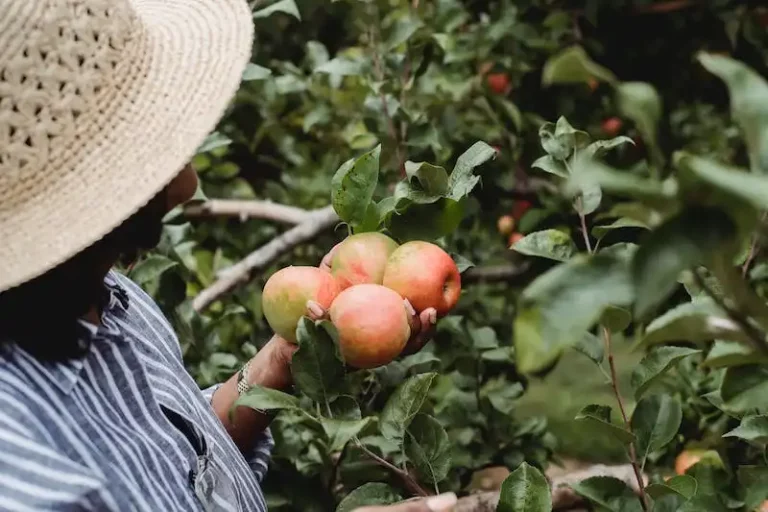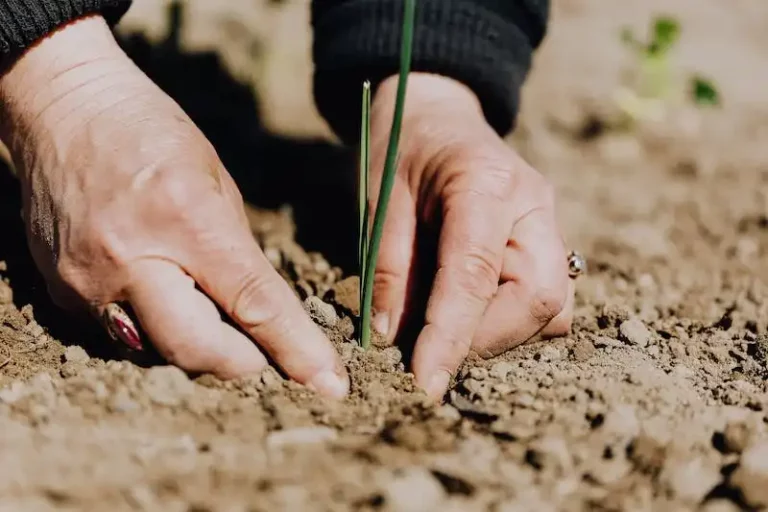Cauliflower, a vegetable featured in many healthy recipes, is not immune to diseases that can greatly diminish its quality and yield. In this article, we will highlight common diseases that affect cauliflower plants and provide a quick guide on how to identify and prevent them.
One of the most common diseases that affect cauliflower is bacterial leaf spot. This disease can cause dark spots on the leaves, which can greatly reduce the plant’s photosynthetic capacity and, ultimately, its overall health. To avoid bacterial leaf spot, it is important to maintain good hygiene in the garden and avoid watering the leaves, focusing instead on watering the soil.
Another disease that can affect cauliflower heads is mildew, a fungal infection that thrives in high-humidity environments. Mildew can cause a white, powdery coating on the leaves and heads of cauliflower plants. To prevent mildew, it is important to provide good air circulation around the plants and avoid overcrowding them. Using resistant cauliflower varieties can also help mitigate the risk of mildew.
Insects can also be a cause of concern for cauliflower plants. Aphids, cabbage worms, and other pests can damage the leaves and heads of cauliflower plants, leading to reduced yield. Regular inspection of the plants and the use of appropriate pest control measures can help prevent insect infestations.
In conclusion, to ensure a healthy and disease-free cauliflower harvest, it is important to be aware of the common diseases that can affect these plants. By following proper gardening practices, such as maintaining good hygiene, providing proper air circulation, and implementing pest control measures, gardeners can greatly reduce the risk of diseases and enjoy a bountiful cauliflower harvest.
Bacterial leaf spot on cauliflower
Bacterial leaf spot is a common disease that affects cauliflower plants. It is caused by the presence of bacteria on the leaves, which can spread quickly and cause extensive damage to the plants. This disease can also affect other brassica crops, such as cabbage and broccoli.
The first sign of bacterial leaf spot is the appearance of small, water-soaked spots on the leaves. These spots can vary in size and color, ranging from light brown to dark brown or black. As the disease progresses, the spots may enlarge and merge together, causing the affected areas to turn yellow and eventually die off.
Bacterial leaf spot can be spread through water, insects, and contact with infected plants or soil. It is important to avoid overhead watering and to keep the leaves as dry as possible to prevent the spread of the disease. In addition, practicing good garden hygiene by removing and disposing of infected plant debris can help reduce the risk of infection.
There are several ways to manage bacterial leaf spot on cauliflower plants. One way is to choose disease-resistant varieties when possible. Another way is to practice crop rotation, avoiding planting cauliflower or other susceptible crops in the same area for several years.
If you notice the symptoms of bacterial leaf spot on your cauliflower plants, it is important to act quickly to prevent further spread of the disease. Start by removing and destroying infected leaves, either by burning them or sealing them in a plastic bag and disposing of them in the trash. This will help reduce the bacterial load in your garden and prevent the disease from spreading to healthy plants.
In some cases, chemical control methods may be necessary to manage bacterial leaf spot. Fungicides and bactericides can be used to treat and prevent the disease, but it is important to follow the instructions provided on the product label.
In conclusion, bacterial leaf spot can greatly reduce the health and yield of cauliflower plants. By practicing good garden hygiene, choosing disease-resistant varieties, and taking prompt action when the disease is detected, you can help protect your cauliflower crop from this damaging disease.
Leave a Reply Cancel reply
When it comes to the health of your garden, it’s important to be proactive in preventing diseases. Cauliflower disease is a common issue that gardeners often face. This disease can greatly affect the health and propagation of your cauliflower plants.
Cauliflower disease can start with small spots on the leaves and quickly spread to the head of the plant. It is often caused by bacterial or fungal infections. Insects can also be a source of diseases, so it’s important to keep an eye out for them and take steps to avoid contact.
To avoid cauliflower disease, it’s important to start with healthy plants and maintain a clean garden. Make sure to harvest the heads of cauliflower at the right time to prevent the spread of disease. Proper watering and soil management can also help prevent the spread of diseases.
In addition to cauliflower disease, there are other diseases that can affect cauliflower plants and other members of the cabbage family, such as broccoli. Some common diseases include powdery mildew, leaf spot, and black rot. It’s important to be aware of these diseases and take necessary steps to prevent them.
If you’re experiencing issues with cauliflower disease or any other garden-related problems, there are resources available to help. Online guides and forums can provide helpful information and tips. You can also listen to gardening podcasts or visit gardening websites for news and updates on common diseases and their prevention.
It’s important to note that cauliflower disease can also affect human health. For example, genital warts, which are caused by the human papillomavirus (HPV), can be spread through contact with the cauliflower virus. Women are especially at risk, as cauliflower disease can cause warts on the vagina or thighs. It’s important to seek medical attention if you suspect you have contracted a cauliflower-related disease.
In conclusion, taking proactive steps to prevent cauliflower disease and other diseases in your garden is crucial for the health of your plants and yourself. By following best practices for plant care, maintaining a clean garden, and being aware of common diseases, you can greatly reduce the risk of encountering these issues and enjoy a successful harvest.
Contact
If you have any questions or concerns regarding cauliflower disease or any other gardening issues, please feel free to reach out to us. We are here to help! You can contact us by filling out the form below or by email at info@cauliflowerdisease.com. We strive to reply to all inquiries as quickly as possible.
| info@cauliflowerdisease.com | |
| Phone | +1 123-456-7890 |
| Address | 123 Garden Street, Cauliflower City, USA |
Additionally, you can find more information on cauliflower disease and other related topics on our website. We have featured articles, news updates, podcasts, and a propagation guide to help you with your gardening needs. Our website also highlights the uses of cauliflower in cooking and provides tips on how to avoid common diseases.
Furthermore, you can connect with us on social media to stay up to date with the latest news and updates. We are active on Facebook, Twitter, and Instagram, where we share gardening tips, health benefits of cauliflower, and much more.
If you notice any issues on our site or have suggestions for improvements, please let us know. Your feedback is greatly appreciated, and it helps us provide a better experience for our users.
Thank you for your time and interest in cauliflower disease. We look forward to hearing from you!
News highlights
Here are some news highlights related to Cauliflower Disease:
- Water is an important source for cauliflower plants, so ensure they receive enough water.
- Cauliflower heads are susceptible to diseases such as mildew and leaf spot, so keep an eye out for them.
- When planting cauliflower, avoid using soil that has recently grown cabbage or broccoli, as it can cause diseases.
- Women should be cautious of genital warts, which can be caused by the Cauliflower Disease.
- Cauliflower propagation can be done through seeds or by transplanting seedlings.
- Garden insects can also be a cause of diseases in cauliflower plants, so take steps to avoid them.
- A quick harvest time is recommended to avoid diseases spreading to other plants.
- Featured podcasts and guides on Cauliflower Disease are available on our site.
- If you spot any signs of Cauliflower Disease, it is important to take immediate action and contact a gardening expert for guidance.
Stay informed and keep your cauliflower plants disease-free!
Site news
Welcome to our site! Here you will find the latest news and helpful information on cauliflower diseases and ways to avoid them. Our featured articles highlight various diseases that can affect your cauliflower plants, such as bacterial leaf spot, warts, and black rot.
We also provide guides on propagation, harvest time, and proper care for healthy cauliflower heads. If you have any questions or need further assistance, please feel free to contact us via the form or through the provided contact information.
In addition to cauliflower diseases, this site also covers diseases that can impact other plants in your garden, including broccoli, cabbage, and cucurbit plants. We offer tips on disease prevention and management to help ensure the health and vitality of your garden.
Furthermore, our site highlights the use of organic and natural methods to prevent and treat diseases. We believe in using environmentally friendly solutions that are safe for both your plants and your health.
Stay informed with our site news section, where we regularly update with new information, tips, and highlights. Sign up for our newsletter to receive updates directly to your inbox, and don’t forget to check out our podcasts for expert advice and insights.
Thank you for visiting our site. We hope you find the information here helpful and that it enables you to have a successful and disease-free cauliflower garden!
Start exploring our articles and guides now to learn more about cauliflower diseases and how to keep your plants healthy.



